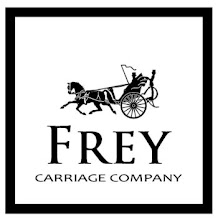Sorry about the title but in my line of work I’ll never get to write about such a provocative subject again. Figured I better make the most of it while I had the chance. As if building great carriages wasn't enough we provide wit and humor free of charge.
Lately there has been a lot of buzz stateside about rubber tires on modern carriages. There have been recent issues with rubber tires pealing off the wheels of European carriages. Most carriages that are imported to the states have steel wheels with rubber tires that are either bonded or vulcanized to a flat rim. This process is probably efficient for manufacturing but not so much for repairs. The photo below shows the tire of a typical import wheel.
As you can see the metal rim is thin. It is a flat piece of steel in which the rubber is bonded. If there is an adhesion failure the process of repair is not easy. I do not believe there are over the counter adhesives and processes available to make a good quality lasting repair.
During manufacturing the rubber is fused to the raw steel. The steel must be clean, chemically treated and then bonded to the rubber. The rubber tire is trimmed and finished after installation to the rim. It’s a complicated process and better suited for large scale production applications rather than putting rubber back on a couple wheels.
Bottom line there are no simple repairs. To do it right the wheel would need to be stripped of paint, chemically washed and new rubber installed through the same adhesion process. Then the wheel needs to be repainted. All things considered it’s probably easier to buy new wheels and the original manufacturer probably had that in mind.
We manufacture wheels and we may be able to offer you an aftermarket alternative to ordering new wheels from Europe. Our wheels are made with a channel rim which is more traditionally seen on American carriages. The metal rim itself is made of a “U” shaped channel. Rubber is extrusion molded to set into this channel. The rubber tire is designed with continuous holes for feeding of wire. These wires are stretched very tight and brazed together. After those connections cool the rubber is pressed closed over that connection.
There are two big advantages to this style of install. One the rim can be powder coated rather than traditionally painted. Powder coat is much more durable than paint. Number two if the rubber were to fail again it can be repaired locally.
Our process is a conversion from the bonded tire to the channel type tire. We have done this in the past with very good success. It is a cost effective solution to shipping new wheels from Europe and makes future repairs much easier.
Basically we remove the hub from your wheel. The spokes are manually cut (shown in photo above) and the exterior of the hub is then machined to clean and true up the outer surface. We build a new wheel around it with new spokes and a steel channel tire. The wheel is then powder coated and channel type rubber installed. This gives you a new wheel with the ability to repair or replace rubber at numerous locations in the states.
Depending on the wheel and the color this process will run about $1,000 to $1,200 per pair for new wheels. Please remove the bearings from the wheels prior to shipment. You can ship the entire carriage if you wish and we can do the complete replacement as another option. Removal and re-installation is done on a time and material basis.
I wish there was a simple solution to this but it’s really more complicated than just putting on new rubber. We have found this concept to be a good way to solve the problem and make future repairs much easier.
Have a great weekend...
Ciao!
T
Saturday, July 7, 2012
Subscribe to:
Comments (Atom)










